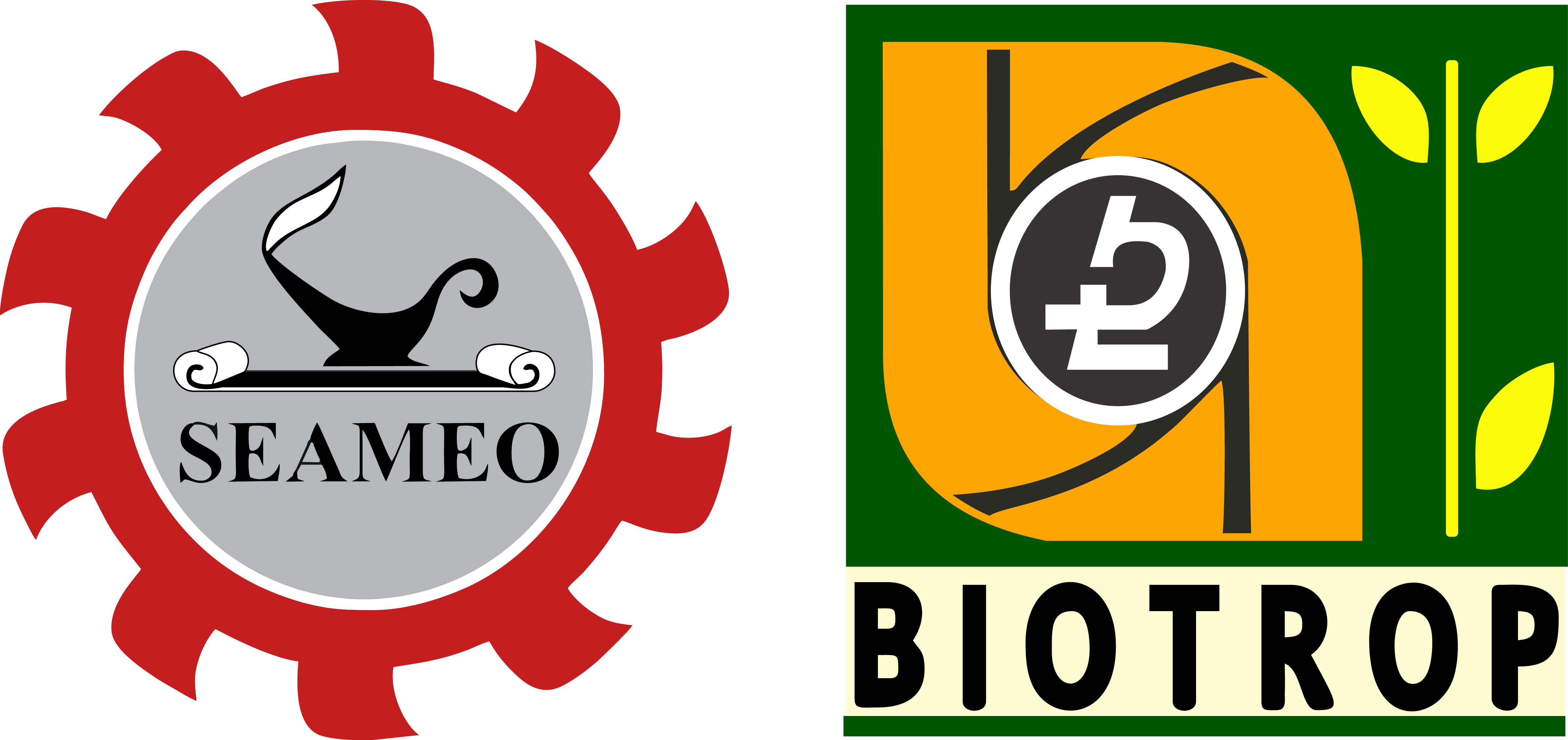The Regional Centre for Tropical Biology of SEAMEO (BIOTROP) is established based on the decision of the Third SEAMEO Conference in Singapore, 6 - 9 February 1968, under the name of Regional Centre for Training, Research and Post Graduate Study in Tropical Biology. The proposal for establishing BIOTROP was based on the findings and recommendations of the Feasibility Team and the Task Force appointed in 1967 to consider the four Indonesian proposals submitted to the Second SEAMEC Conference in Manila 25 -28 November 1966. The Second Advisory Council Meeting of BIOTROP held in Bandung, Indonesia on 30 September – 2 October 1968 agreed on the new name of BIOTROP, i.e. SEAMEO Regional Centre for Tropical Biology which can be abbreviated to BIOTROP.
Bogor in Indonesia is chosen as BIOTROP’s headquarter because at that time in Bogor there are many existing famous tropical biological institutions, such as Bogor Botanical Gardens, the Herbarium Bogoriense, The Treub Laboratories and the Zoological Museum which those three institutions are now belong to the National Biological Institute of the Indonesian Institute of Sciences. Besides, Bogor is the center of scientific activities in agriculture, where the Forest Research Institute, the Central Research Institute for Agriculture, the Central Research Institute for Estate Crops, the Animal Husbandry Research Institute, the Inland Fisheries Research Institute, the Soil Research Institute and Institut Pertanian Bogor (IPB University) are located.
BIOTROP has been developed to provide the SEAMEO member countries (Indonesia, Cambodia, Lao PDR, Malaysia, Philippines, Singapore, Thailand and Vietnam) with increased capability in biological research and training relevant to regional economic needs.
At its initiation, BIOTROP’s objective is to contribute to the economic development of the Southeast Asian Region by identifying and solving critical biological problems; the solution of which will enhance regional development and helping solve these problems through appropriately designed research training programs. In particular, BIOTROP concentrates on research programs, developing the tools and principles of research in its defined program areas, and on training professionals in the Region in their use to stimulate further biological research in member countries; thus producing the maximum multiplier effect from BIOTROP programs. Besides, dissemination of findings and results of experimentation is considered a very important aspect in helping BIOTROP to attain its objectives.
During its Interim Period (1968-1973), BIOTROP was “grafted on” to the Lembaga Biologi Nasional (National Biological Institute) of the Lembaga Ilmu Pengetahuan Indonesia (Indonesian Institute of Sciences). Starting 5 June 1972, BIOTROP was organizationally separated from LBN, although it still may use the existing Lab 1 building of LBN.
BIOTROP completed its interim period in the first half of 1973 and started its First Five-Year Permanent Operational Period (1973-1978) in the second half of 1973. Starting from this moment, it was considered important for BIOTROP to have its own headquarter, built in accordance with its needs.
Thus, a master plan for BIOTROP physical facilities was designed and submitted to the Ninth Governing Board Meeting, Singapore 17-19 May 1973. At that time, the Government of Indonesia provided BIOTROP with a piece of land of approximately 3.5 ha for the construction, located in Tajur, Bogor.
The newly built headquarter will accommodate BIOTROP’s training and research activities, administration, clearing house, as well as living quarters for trainees and foreign staff. BIOTROP officially moved to the new location in January 1978.
Nowadays, the building that previously functioned as the headquarter offices are the MIT campus, PDSD office, Services Laboratory, Capacity Building Department office, Community Development office. The previous auditorium currently becomes the Bogor Science Park.
Design of BIOTROP’s logo was initiated in the Tenth Governing Board Meeting where three designs of BIOTROP’s logo were presented to the Board for consideration. After some discussion, none of the presented designs was accepted by the Board. Instead, the Board recommended that: 1) each member of Board’s country should submit to the BIOTROP’s director at least one design of a BIOTROP logo with explanatory notes by the end of December 1973, for the Board’s consideration at its next meeting; 2) in the meantime BIOTROP will use as its logo the SEAMEO logo with the word BIOTROP.
In the Eleventh Governing Board Meeting, there were fourteen designs for BIOTROP’s logo presented by seven member countries for the Board’s consideration. Based on these designs the Board decided that the BIOTROP’s logo will incorporate certain elements from the designs submitted by the Philippines and Singapore. BIOTROP is assigned to prepare a number of versions of the logo for the Board’s considerations and adoption in the subsequent Governing Board Meeting.
In the Twelfth Governing Board Meeting there were eleven versions of BIOTROP logo presented to the Board for consideration. During this Governing Board Meeting it was decided the BIOTROP logo as printed in the SEAMEO-BIOTROP Newsletter No. 9, July-September 1974, i.e.

This logo symbolizes:
- The green color symbolizes the tropics or tropical region
- The gold/orange is an abstract symbol of modern sciences
- The image within the abstract symbol is a microscope representing research/science
- The yellow-green abstractions/leaves stand for plant life and vegetation
Currently, BIOTROP keeps maintaining the hard-working culture while focusing on the programs to generate more knowledge, to develop expertise in tropical biology and to increase its visibility throughout the Southeast Asia region while keep contributing to economic development for the Southeast Asia Region. (SIS)